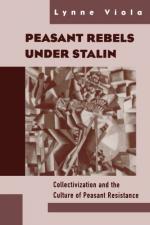|
This section contains 1,306 words (approx. 5 pages at 300 words per page) |

|
The Effects of Soviet Collectivisation on Society and Economy
Summary: Examines to what extent was the collectivisation of agriculture an `economic and social disaster' for the USSR in the period before the Second World War. Describes how collectivisation led to the famine of 1932 to 1934. Provides statistics for the famine years.
Collectivisation was a disaster of colossal proportions, both on social and economic grounds. The agricultural production infrastructure was brought to the verge of collapse. There was the huge social cost of the millions of deaths caused by the food shortages and then the famine from 1932 to 34. A country can not endure these forms of hardships during a process such as collectivisation, and still call it a success.
Collectives, in order to be truly counted as an economic success, should benefit the country or at least maintain the standards of productivity preserved before the new order. Food shortages to the point of famine, therefore, can only be seen as a mark of failure. Peasant resistance was a main cause of these acute problems and the passive resistance that they took part in was a foreseeable consequence of collectivisation; farmers, unwilling to give up the freedom of individual enterprise, burnt...
|
This section contains 1,306 words (approx. 5 pages at 300 words per page) |

|


